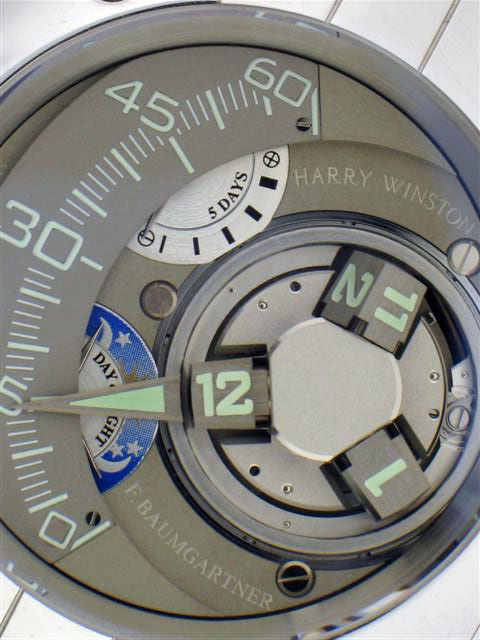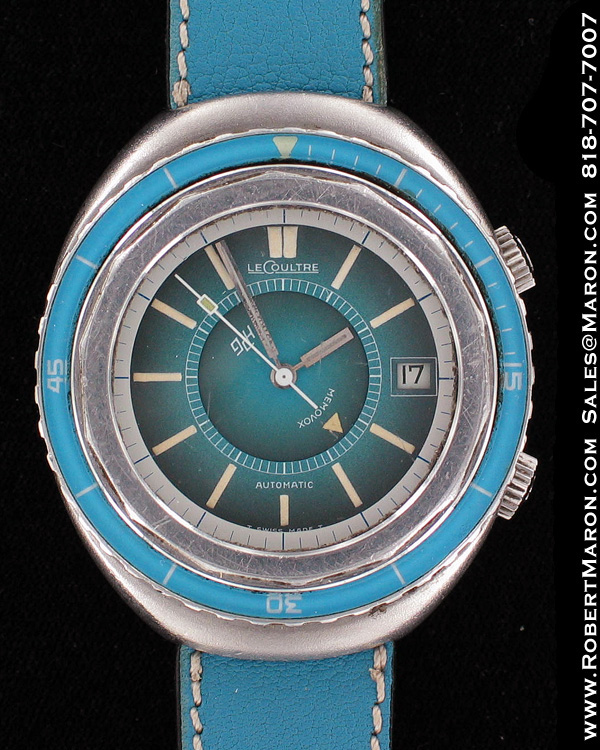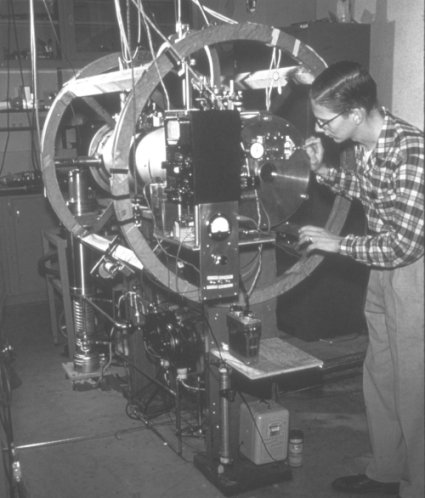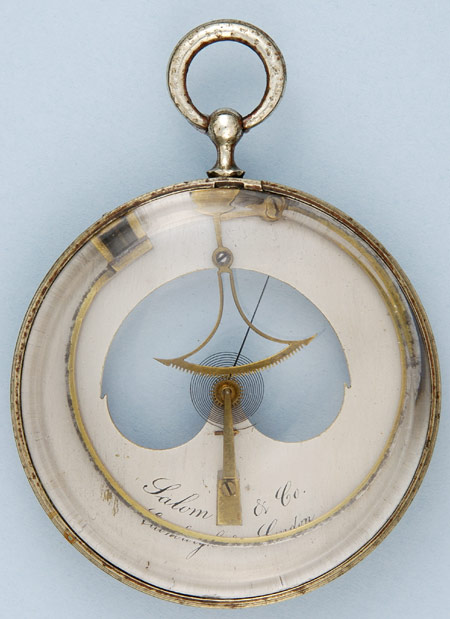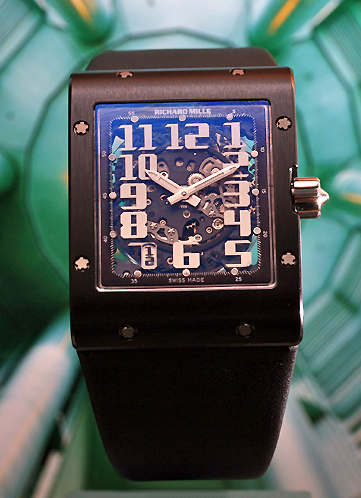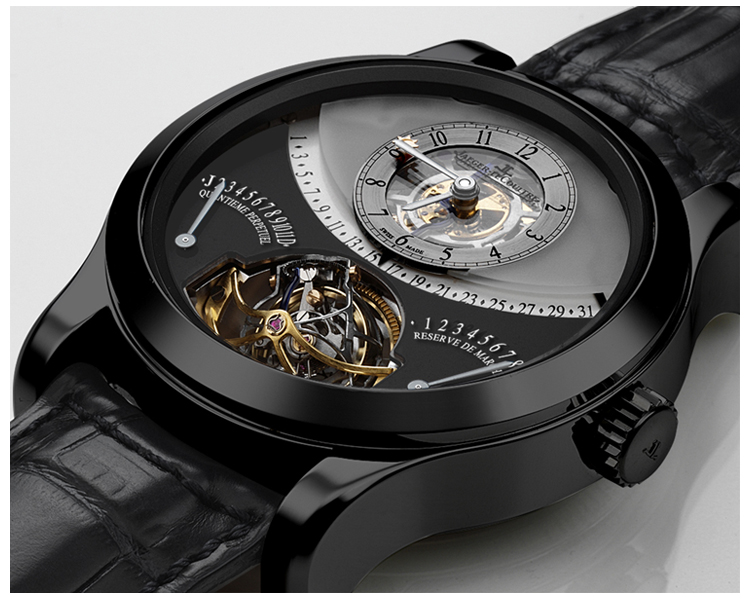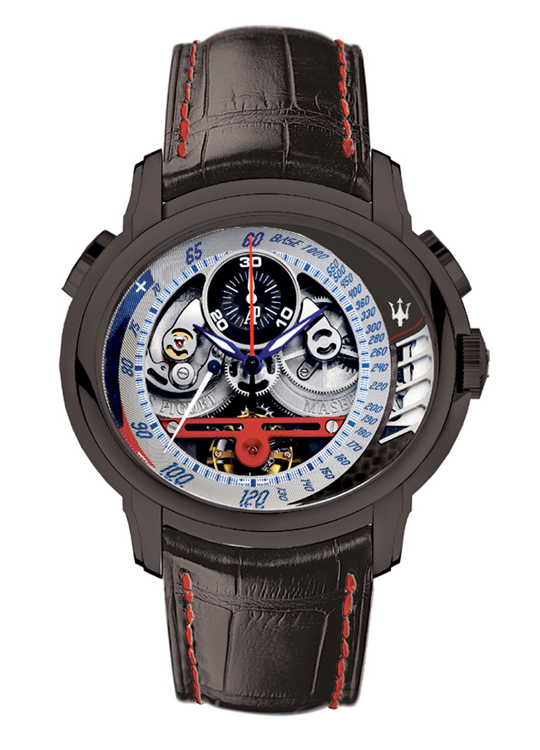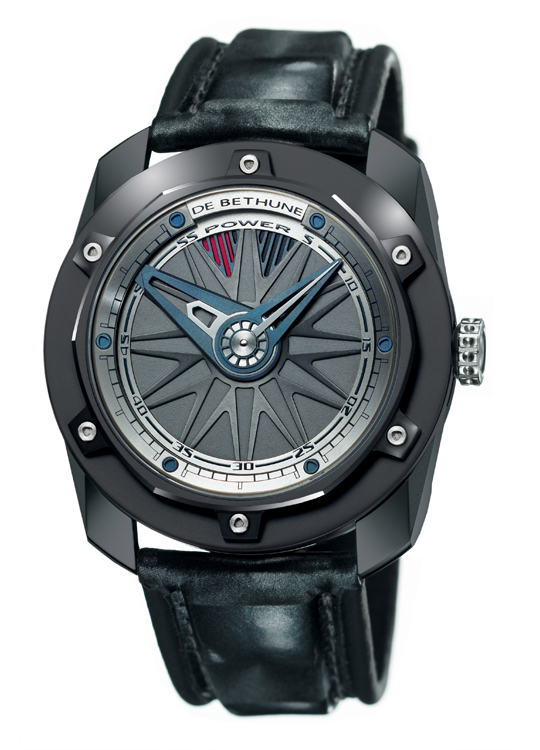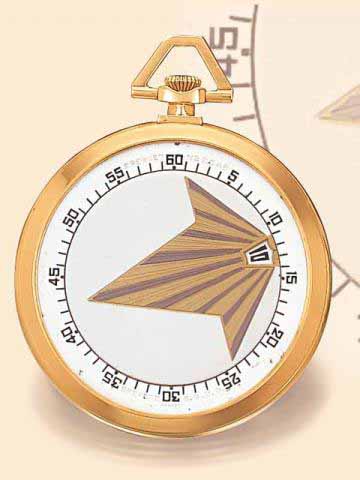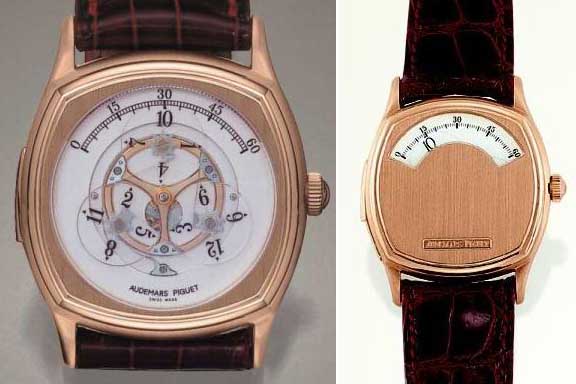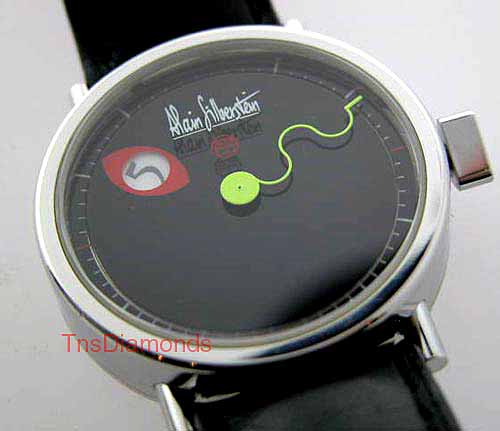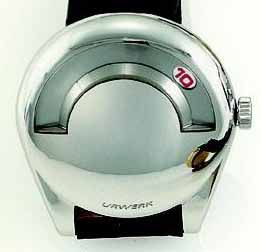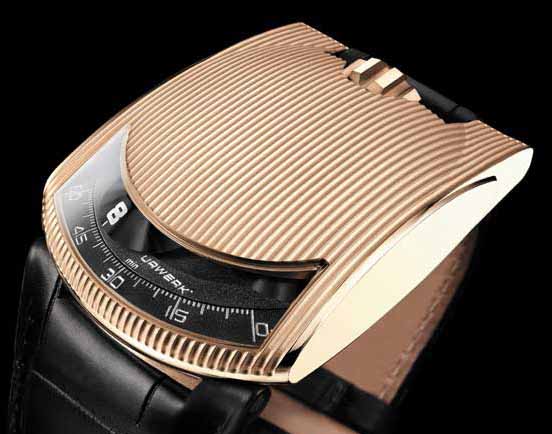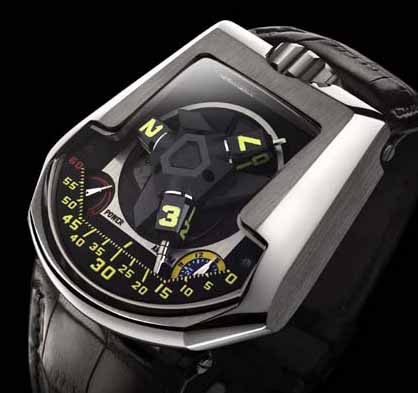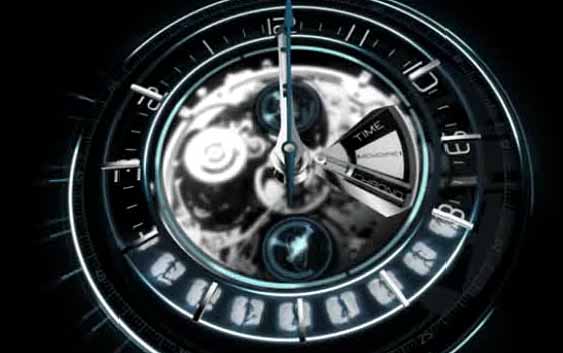 The Wandering Hour display (also known as a Floating Hour or Chronoscope) has been around four centuries. In 1656 the Campanus brothers had built a night clock for Pope Alexander XII. In a total innovation, they replaced the then conventional hands with hour figures on rotating discs, which performed a semicircular arc across the clock face. The correct figure appeared at the start of each new hour. It then moved clockwise across the arc of the dial and, depending on its progress, simultaneously marked the quarter or half-hour, which had just passed. Alexander's night pendulum clock was illuminated by an oil lamp so that the pope could see the time in the dark. The concept is that the moving hour display keeps an almost metaphorical count of the passing minutes rising and setting along the hourly arc."It is a deceptively simple and elegant system, and it is literally as old as the combination of concentric hours and minutes hands to which we are so accustomed. -- The orbit of the elegantly simple planetary ring, and the epicyclic dance of hour numerals which surrounded it, remained hidden beneath a solid dial." (source
The Wandering Hour display (also known as a Floating Hour or Chronoscope) has been around four centuries. In 1656 the Campanus brothers had built a night clock for Pope Alexander XII. In a total innovation, they replaced the then conventional hands with hour figures on rotating discs, which performed a semicircular arc across the clock face. The correct figure appeared at the start of each new hour. It then moved clockwise across the arc of the dial and, depending on its progress, simultaneously marked the quarter or half-hour, which had just passed. Alexander's night pendulum clock was illuminated by an oil lamp so that the pope could see the time in the dark. The concept is that the moving hour display keeps an almost metaphorical count of the passing minutes rising and setting along the hourly arc."It is a deceptively simple and elegant system, and it is literally as old as the combination of concentric hours and minutes hands to which we are so accustomed. -- The orbit of the elegantly simple planetary ring, and the epicyclic dance of hour numerals which surrounded it, remained hidden beneath a solid dial." (source)

Campani Brothers Tabernacle Night Clock
Late 17th Century -->
LinkBelow are samples of Wandering Hour watches over the past four centuries. Only during the past few decades have watchmakers realized the full beauty of this display and exposed their dials to reveal the symbolic inner workings as part of the design itself.
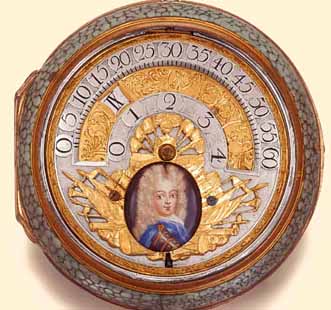
Watches with wandering hour dials first appeared in the 17th century. In England, they were often commissioned by the King, to be presented to visitors or in recognition of loyalty to the country. The watch above from 1710 is likely the portrait of Frederick I of Prussia (1657-1713) -->
LinkOne of the earliest watchmakers to adapt this style to a pocket watch was British watchmaker Joseph Windmills. Joseph Antram, watchmaker to the King of England also produced wandering hours like this one-->
Link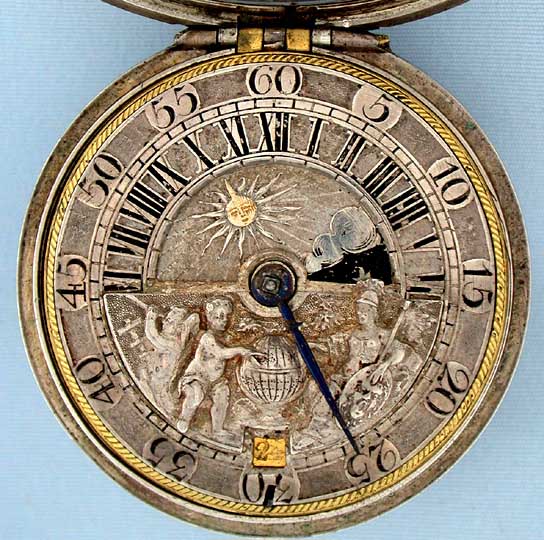
A variation was the '
Sun and Moon' dial. A 1750 Dutch pocket watch by G.Knip (above). Within the inner half ring, a revolving disc is painted with the sun and moon rotating every 24 hours, thereby indicating not only the hour but whether it is day or night. A minute hand was used in the normal circular fashion. -->
Link Another model-->
Link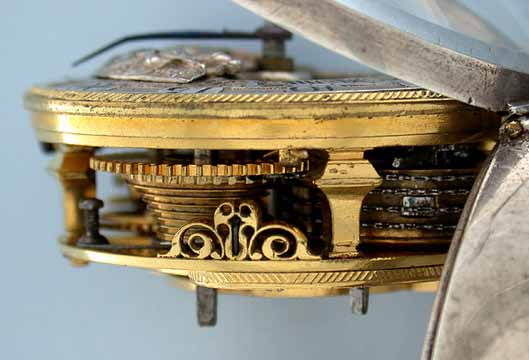
Sideview of the '
Sun Moon' Wandering Hour
Typically, four digits appear on three disks, each rotating epicyloidally one quarter while out of view and advancing to the next corresponding hour. The minutes were easily approximated by the hour position within the arc.

Breguet Wandering Hour Wristwatch by
Gubelin
The
Audemars Piguet "Star Wheel" reinvented this system in the early 1990s, creating many variations of wandering hour wristwatches.
"Three transparent sapphire disks, or star wheels, are each inscribed with four hour indicators and attached to a rotating center wheel. As the assembly turns, the current hour indicator is rotated into view and then passed across a 120-degree minutes sector. The time is read by noting the visible hour pointing to the current minute." (
source) Additional information-->
Link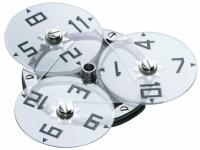
Star Wheel Sapphire Disks
Each disk is obscured until it rises into the arc where the background contrasts the digits into legibility.

Vincent Calabrese "Horus"
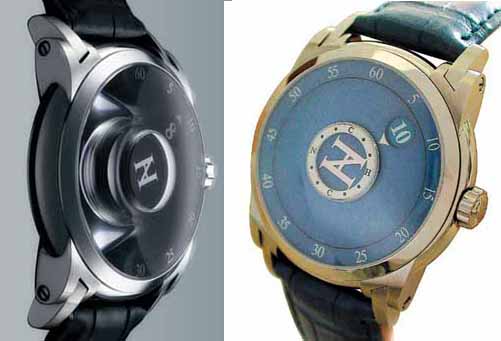
Vincent Calabrese "Ottica"
These orbiting satellite displays have had a few revivals over the past 300 years but only in wristwatches in the past few decades. The brand
Urwerk (below) is taking this very old concept to interstellar levels. Their revolutionary wandering hour displays have become three dimensional, the numbers are placed on spinning conical discs or rotating cubes with retractable retrograde pointers.

The Urwerk wandering display was just too cool to keep covered.
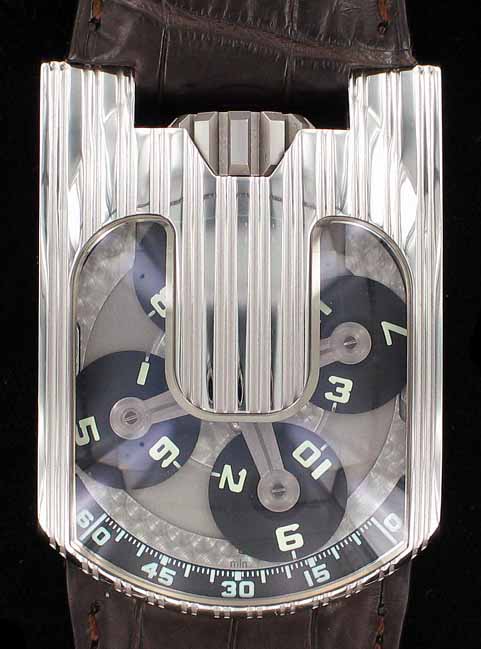
Urwerk
103 seriesTheir first display with exposed hours
"The innovative rotating satellite complication is the heart and soul of the 103 series of watches. The orbital cross carries the four hour-satellites and an internal Geneva cross governs each of these satellites. Each of the satellite features three hour numbers four hours apart. As a satellite approaches the crown, its Geneva cross engages a pin and rotates the disk 120° for the new hour to take its position." (
source)

The Urwerk team evolved their Wandering Hour into cubes and retrograde minutes for the Harry Winston
"Opus V."
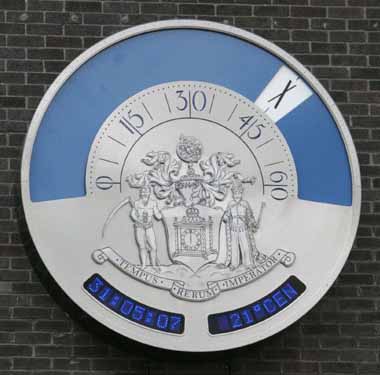 QP Magazine
QP Magazine recently featured this public clock in London,
The Newgate Clock, possibly the only public wandering hour clock in the world. It was created by horologist
Joanna Migdal and inspired by Joseph Windmills original designs. See how it works here-->
Link"The innovation lies not only in the display which evokes the natural course of the sun on the horizon, but also on the original satellite mechanism whose future applications are yet to be discovered." (source)
Related Posts;
Jump Hour WatchesMystery Dial WatchesWatch HistoryRetrograde WatchesFind other watches|
Watchismo Blog |
Watchismo Shop |
Contact Us |
Subscribe |
 Always the sucker for cloaked clocks & watches, I recently discovered the genre of antique walking stick timepieces and couldn't resist sharing...
Always the sucker for cloaked clocks & watches, I recently discovered the genre of antique walking stick timepieces and couldn't resist sharing...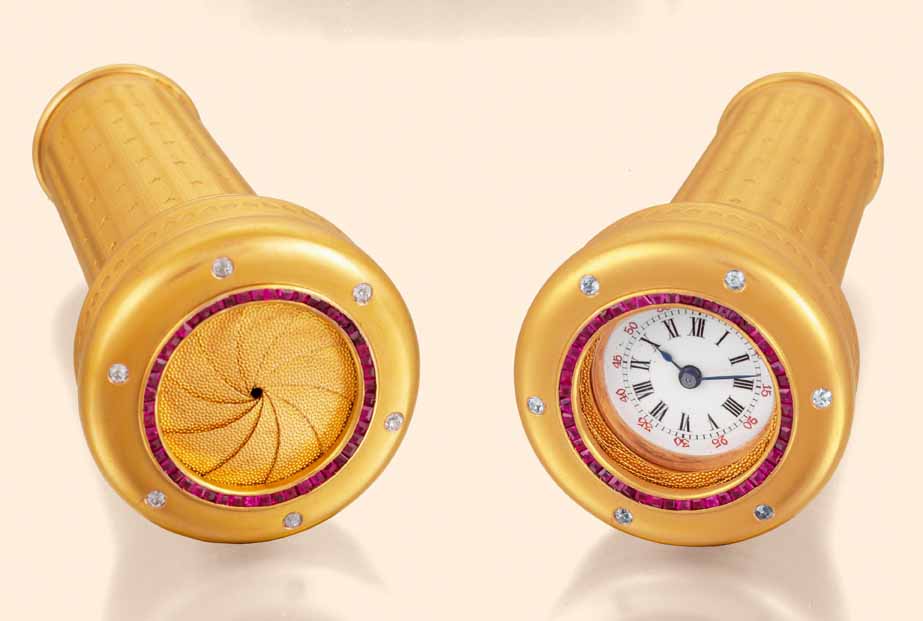 A fascinating 1900 walking stick topper with bezel rotating like the iris of a camera shutter. Twisting of the bezel revealed the concealed watch. The top was also hinged to house a photograph and to access the winding and hand-setting crowns. Sold for nearly $30,000-->Link
A fascinating 1900 walking stick topper with bezel rotating like the iris of a camera shutter. Twisting of the bezel revealed the concealed watch. The top was also hinged to house a photograph and to access the winding and hand-setting crowns. Sold for nearly $30,000-->Link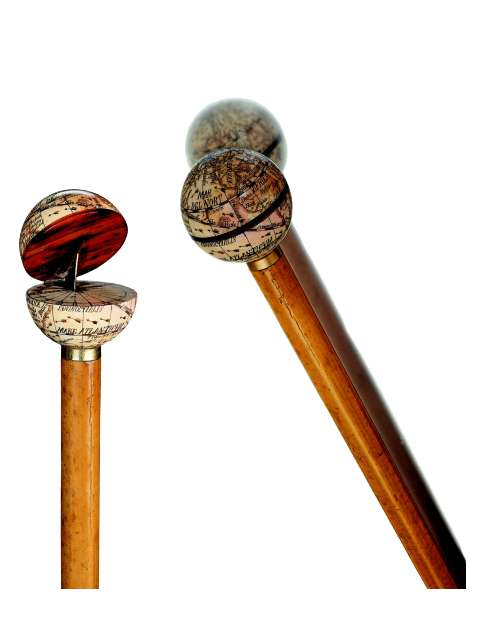 1860 Walking Stick with Sundial inside hinged globe. The sphere made from ivory and horn, the equator in tortoise shell.
1860 Walking Stick with Sundial inside hinged globe. The sphere made from ivory and horn, the equator in tortoise shell. 1890 walking stick with silver cane handle and patented keyless concealed watch by Albert Bertholet and Louis Burry-Haldi, Bienne.
1890 walking stick with silver cane handle and patented keyless concealed watch by Albert Bertholet and Louis Burry-Haldi, Bienne. 1815 Snake Stick by Ch(ris)t Moricant à Genève. Concealed watch and tobacco compartment.
1815 Snake Stick by Ch(ris)t Moricant à Genève. Concealed watch and tobacco compartment.


